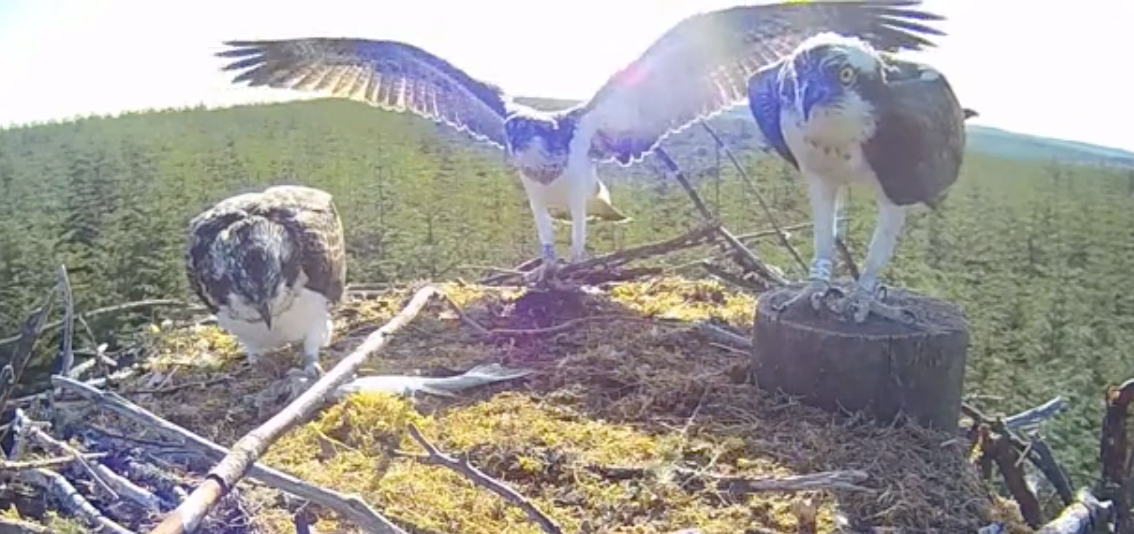Milestone for bird of prey as record number of ospreys seen in forest
Ospreys became extinct in the UK in the 20th century, mainly due to human activity, but have begun naturally recolonising areas in Scotland and northern England

Your support helps us to tell the story
From reproductive rights to climate change to Big Tech, The Independent is on the ground when the story is developing. Whether it's investigating the financials of Elon Musk's pro-Trump PAC or producing our latest documentary, 'The A Word', which shines a light on the American women fighting for reproductive rights, we know how important it is to parse out the facts from the messaging.
At such a critical moment in US history, we need reporters on the ground. Your donation allows us to keep sending journalists to speak to both sides of the story.
The Independent is trusted by Americans across the entire political spectrum. And unlike many other quality news outlets, we choose not to lock Americans out of our reporting and analysis with paywalls. We believe quality journalism should be available to everyone, paid for by those who can afford it.
Your support makes all the difference.For the first time in 200 years, osprey chicks have been born to fathers who themselves were born in Northumberland’s Kielder Forest.
In fact, conservationists say a record number of ospreys are set to be recorded at the key outpost for the bird of prey, which became extinct in the UK in the 20th century, largely due to Victorian egg and skin collectors and being targeted by farmers to protect fish stocks.
This week, Forestry England experts visited one of the remote nesting sites to attach an identifying ring around the leg of one of the chicks.
They gently lowered the young osprey, named Elsin, to the ground from its nest, affixed the ring and a colour tag to indicate that it is an English osprey, and recorded its weight.
Forestry England ornithologist Martin Davison said: “Three more chicks on a separate nest also have a Kielder-born dad, which signifies a big step forward.
“Kielder Water and Forest Park is now an osprey stronghold, and a crucial staging post in what we hope is the natural recolonisation of northern England.
“We have an amazing habitat for ospreys and have come a long way over the past decade,” he said.
The Kielder Osprey partnership recorded at least 16 healthy young ospreys across seven nests in the forest park, and said that a record number are likely to fledge in the area.
Cameras monitor a number of the nest sites, allowing conservationists and nature enthusiasts to glimpse the daily routines of the birds.
Joanna Dailey, a local volunteer who has closely monitored birds at Kielder Forest Park for more than a decade, said: “Elsin’s dad was born in 2014 and was not only ringed, but also fitted with a satellite tag.
“It took him until April the following year to reach Senegal, where he stayed for a couple of years.
“Driven by a homing instinct, he first came back to Kielder in 2016 after an epic journey in which he was thrown thousands of miles off course by a sandstorm.”
She said that last year the well-travelled Osprey had tried to breed, but the eggs failed; he was then “jilted” by his partner, she said, before he “happily found another female” and together they produced Elsin.
“Ospreys are iconic and incredible birds, and being able to follow at least part of their adventures is a real privilege,” Ms Dailey added.
Ospreys are known to grow to between 50 and 66cm in length, with an adult wingspan reaching up to 175cm. The birds of prey subsist mostly on fish and are found on all continents around the globe, save for Antarctica.
They are a migratory species, and like Elsin’s father, UK ospreys travel to west Africa in early autumn and return to the UK in the spring – travelling between 5,000 and 6,000km each way.
In the mid-1950s, Ospreys naturally recolonised and began breeding in the Loch Garten nature reserve, in the Abernethy Forest in Scotland, and then in England in 2001 at Bassenthwaite in the Lake District.
Ospreys returned to Kielder Forest in 2008, and have been monitored by ornithologists and Osprey enthusiasts since.
With additional reporting from PA
Join our commenting forum
Join thought-provoking conversations, follow other Independent readers and see their replies
Comments